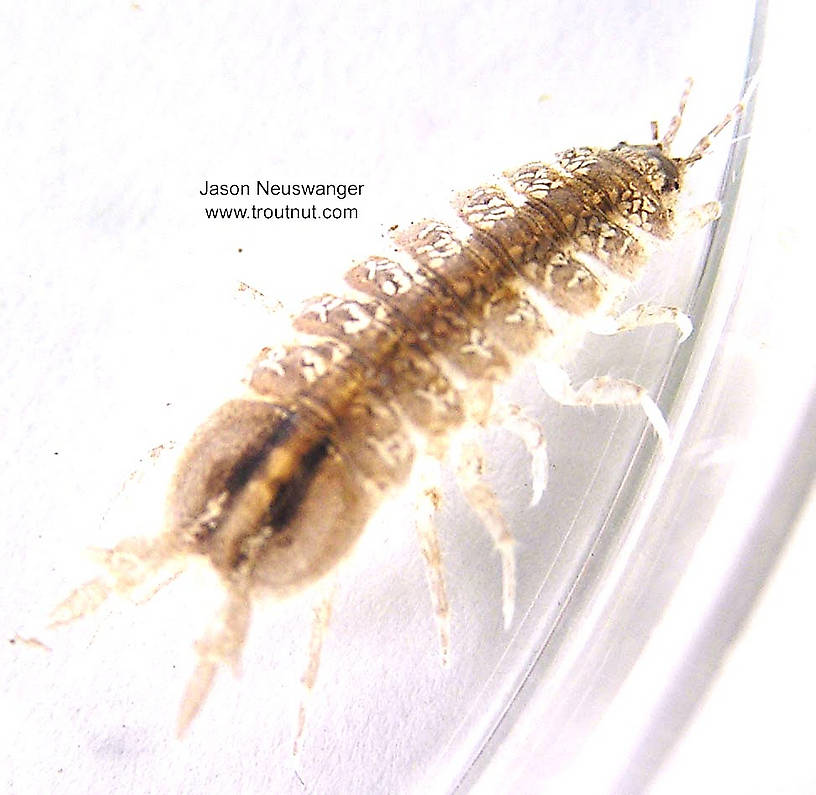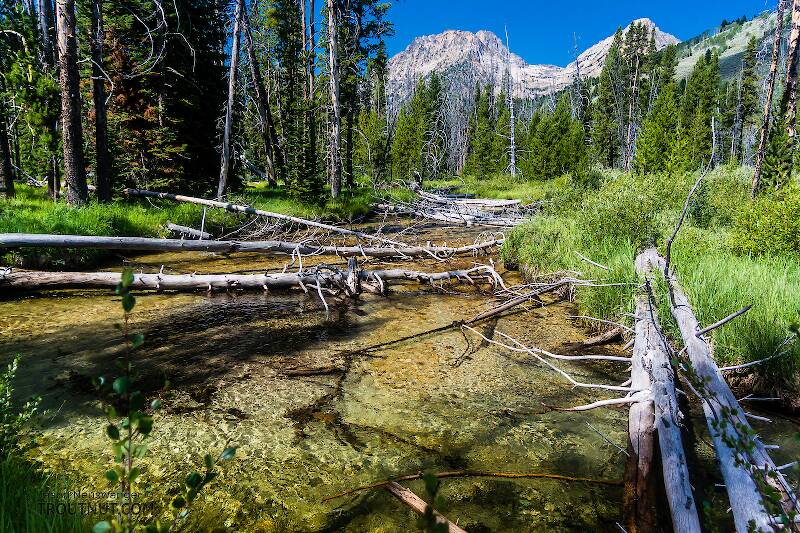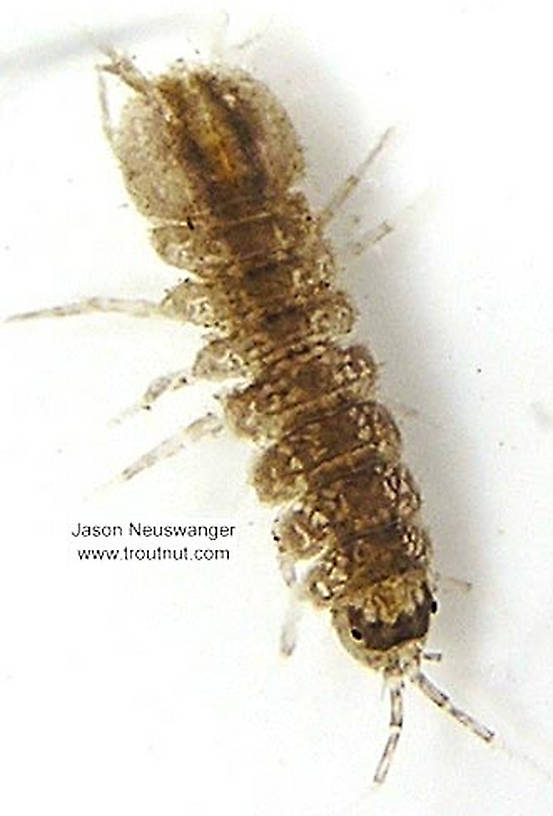
Blue-winged Olives
Baetis
Tiny Baetis mayflies are perhaps the most commonly encountered and imitated by anglers on all American trout streams due to their great abundance, widespread distribution, and trout-friendly emergence habits.
Featured on the forum

This is the first of it's family I've seen, collected from a tiny, fishless stream in the Cascades. The three species of this genus all live in the Northwest and are predators that primarily eat stonefly nymphs Merritt R.W., Cummins, K.W., and Berg, M.B. (2019).

Troutnut is a project started in 2003 by salmonid ecologist Jason "Troutnut" Neuswanger to help anglers and
fly tyers unabashedly embrace the entomological side of the sport. Learn more about Troutnut or
support the project for an enhanced experience here.
Arthropod Order Isopoda (Sowbugs)

They should not be imitated with the same patterns because they are much more wide and tend to sprawl their legs to the side instead of tucking them neatly under the body. They crawl around instead of swimming, so they are probably best imitated with a dead-drift.
They produce new broods once every two months, allowing them to populate a stream very quickly if enough food is there to support them.
This order also includes popular terrestrial species commonly known as pillbugs or rolly polies. They aren't known to be relevant to fly fishermen.
Specimens of the Arthropod Order Isopoda
1 Male Adult
1 Adult
Discussions of Isopoda
Help to get some specimens of the isopod Caecidotea communis
11 replies
Last reply on Mar 29, 2013 by Leonardo
My name is Leonardo García, I am a biologist intern in the National Autonomous University of Mexico and I'm doing my thesis with title "Morphological variation in the genus Caecidotea isopods (Packard, 1871) (Crustacea: Peracarida: Isopoda) of Mexico." Inside the National Collection of Crustacean, Biology Institute (UNAM).
I was wondering if somebody can help me to get some specimens of the specie Caecidotea communis and send them to me to continue with my thesis work. It would help and enrich my study.
Thanks for your attention
Leo
I was wondering if somebody can help me to get some specimens of the specie Caecidotea communis and send them to me to continue with my thesis work. It would help and enrich my study.
Thanks for your attention
Leo
Some Photos for Fred
4 replies
Posted by Martinlf on Jan 26, 2011
Last reply on Jan 28, 2011 by FredH
Do these look like the bug you ask about in your post?
Start a Discussion of Isopoda
References
- Merritt R.W., Cummins, K.W., and Berg, M.B. 2019. An Introduction to the Aquatic Insects of North America (Fifth Edition). Kendall/Hunt Publishing Company.
- Schwiebert, Ernest G. 1955. Matching the Hatch. MacMillan Publishing Company.
Arthropod Order Isopoda (Sowbugs)
Taxonomy
Family in Isopoda
AsellidaeCress Bugs
2
6
Family in Isopoda: Asellidae


